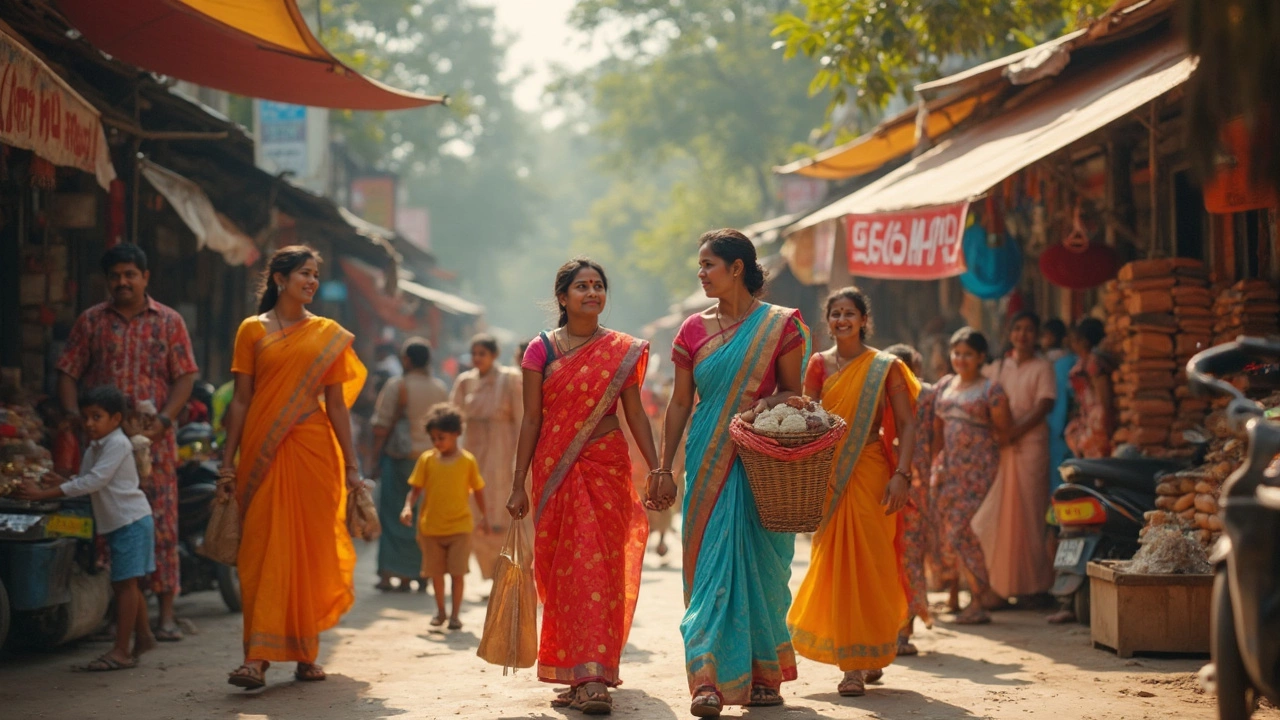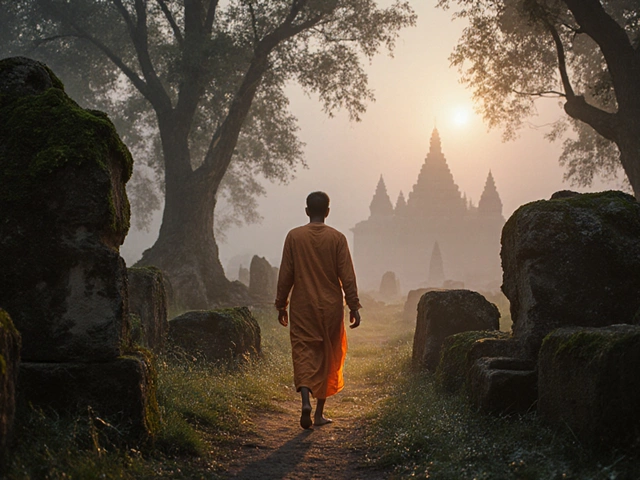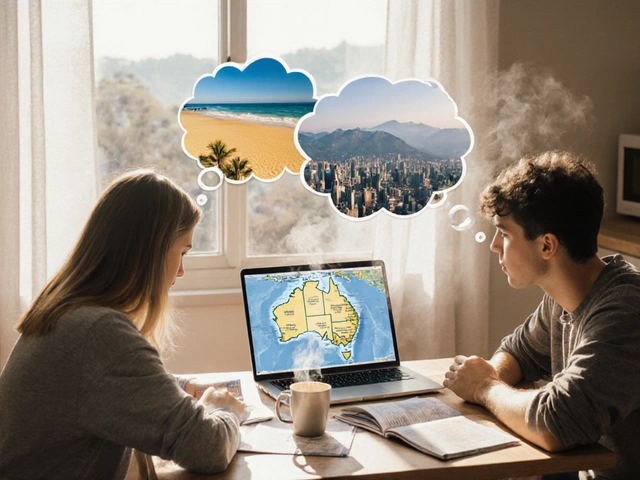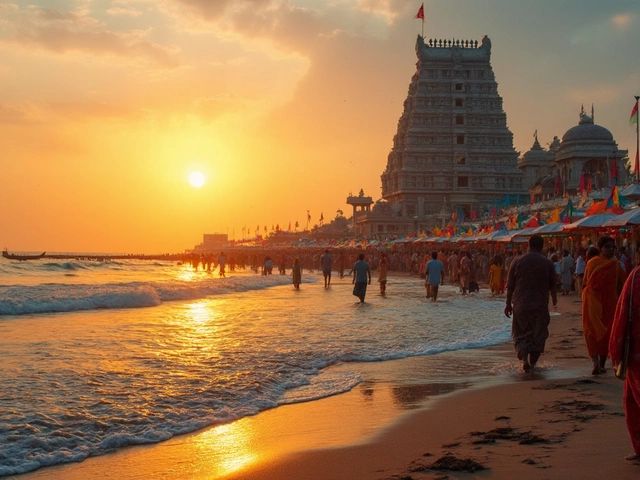The first thing most folks want to know before booking those tickets: is South India actually safe for tourists? The short answer—yes, it’s much safer than you might think. Popular spots like Kerala, Tamil Nadu, Karnataka, and Andhra Pradesh welcome millions of visitors every year, including families like mine. Sure, there are places where you need to watch your step, but most traveler mishaps come down to not knowing what to expect.
Petty theft, quick scams, and getting lost in a hectic city do happen—but violent crime against tourists is rare. Most locals go out of their way to help out, especially if you’re struggling with the language or trying to find your way. Whenever I’ve traveled with my son Rylan, or even with our scruffy dog Max tagging along in a car, what stood out most was how curious and welcoming folks were.
But let’s be real—just because crime rates are low doesn’t mean you can leave your guard at home. Trains and buses can get packed; pickpocketing is a thing in crowded spots. Some auto-rickshaw drivers try to overcharge people who look like outsiders. So, if you prep with the right info and stick to a few basic safety habits, you set yourself up for a way smoother trip.
- Reality Check: Is South India Really Safe?
- Common Risks and How to Dodge Them
- Getting Around: Transport and Local Customs
- Health, Food, and Staying Comfortable
- Practical Tips for Different Types of Travelers
Reality Check: Is South India Really Safe?
You’ve probably heard way too many stereotypes about traveling in India—some fair, some totally blown out of proportion. Here’s what’s real: South India travel is known for lower crime rates and friendlier vibes compared to some of the busier northern cities. Tourist hotspots like Kochi, Mysore, Thiruvananthapuram, and Pondicherry are used to international visitors and have solid reputations for keeping things safe and easygoing.
If you look at the numbers, states like Kerala and Tamil Nadu regularly rank among the safest in the country for travelers. Here’s a peek at the last few years (source: Indian Police Bureau stats, 2023):
| State | Annual Tourist Arrivals | Reported Tourist-Related Crimes |
|---|---|---|
| Kerala | 16 million | 650 |
| Tamil Nadu | 32 million | 1,150 |
| Karnataka | 18 million | 700 |
What does this mean? Less than one incident per 10,000 tourists. Those odds are pretty solid compared to many global destinations.
It doesn’t mean you can let your guard down, of course. Most issues come down to things like bag snatching, pickpocketing on crowded buses, or getting a little lost while wandering. Violent crime involving foreign tourists is extremely rare. And just so you know, there’s no big problem with kidnapping or organized scams directly targeting travelers like you might see in movies or sensational news stories.
One cool thing about South India travel is how locals often keep an eye out for visitors. I’ve had strangers step in when a rickshaw driver tried to pull a fast one on me or be super helpful when my kid Rylan managed to misplace his sandals at the temple steps. People might stare (especially in the less touristy areas), but in most cases, it’s just curiosity.
There’s no need to stress about wearing flashy stuff or sticking out. Just use your usual common sense: keep your important stuff zipped up, double-check your hotel doors, and follow local advice about where not to wander after dark. South India’s big cities shut down earlier in the evening compared to north Indian cities, so sticking to main roads after sunset is just smarter all around.
Bottom line? If you use practical travel smarts, tourist safety in South India is something you can feel good about.
Common Risks and How to Dodge Them
When it comes to South India travel, most risks are pretty simple to avoid if you know what to look for. Here’s the no-nonsense rundown.
Petty theft tops the list. Crowded bus stations, train platforms (think Chennai Central or Bangalore’s Majestic), and local markets are where pickpockets do their thing. But they’re not ninja-level. Zip your bag, keep wallets in front pockets, and don’t flash your phone—or you’ll make yourself a target. Most thefts happen when people are distracted, either by their phones, bags slung over one shoulder, or when they’re wrestling luggage.
Auto-rickshaw fares can be another headache. Not all, but some drivers try to overcharge tourists. The fix? Stick to the official pre-paid auto counters at airports or train stations, or use ride apps like Ola and Uber that work across South Indian cities. In smaller towns where apps are spotty, check posted fare charts or ask a local for the real price before you hop in.
Don’t fall for the classic tourist scams—like fake tour guides or dodgy "exclusive" deals (especially around temples in places like Madurai or beaches in Goa, though that’s technically west, but patterns are similar). If it sounds too good to be true, it probably is.
- Always book hotels and major attractions from their official websites or a trusted platform—never from someone who chases you down on the street.
- Keep a digital copy of your passport and important docs—just in case you lose them.
- Decent WiFi can be spotty, so having a local SIM card makes it easier to call for help if you get stuck or need directions.
One detail you might not hear much: road safety is a real thing. Traffic in cities like Hyderabad or Chennai can be wild. Not organized wild—just, anything-goes wild. Pedestrian crossings are ignored, and you’ll see motorcycles everywhere. Use footbridges when you can, and look both ways even when the light is green. If you’re renting a car, go slow and don’t be afraid to use your horn.
| Common Issue | How to Dodge It |
|---|---|
| Pickpocketing | Secure your stuff, be alert in crowds |
| Auto-rickshaw scams | Use ride apps, pre-paid counters, or check fares with locals |
| Fake guides | Book in advance, don’t pay cash to random people |
| Bad WiFi | Get a local SIM for mobile internet |
| Traffic chaos | Be a defensive walker/driver, use crosswalks and footbridges |
Most problems in South India travel aren’t dangerous, just annoying. A bit of caution, some street smarts, and knowing what to expect puts you way ahead of the game.
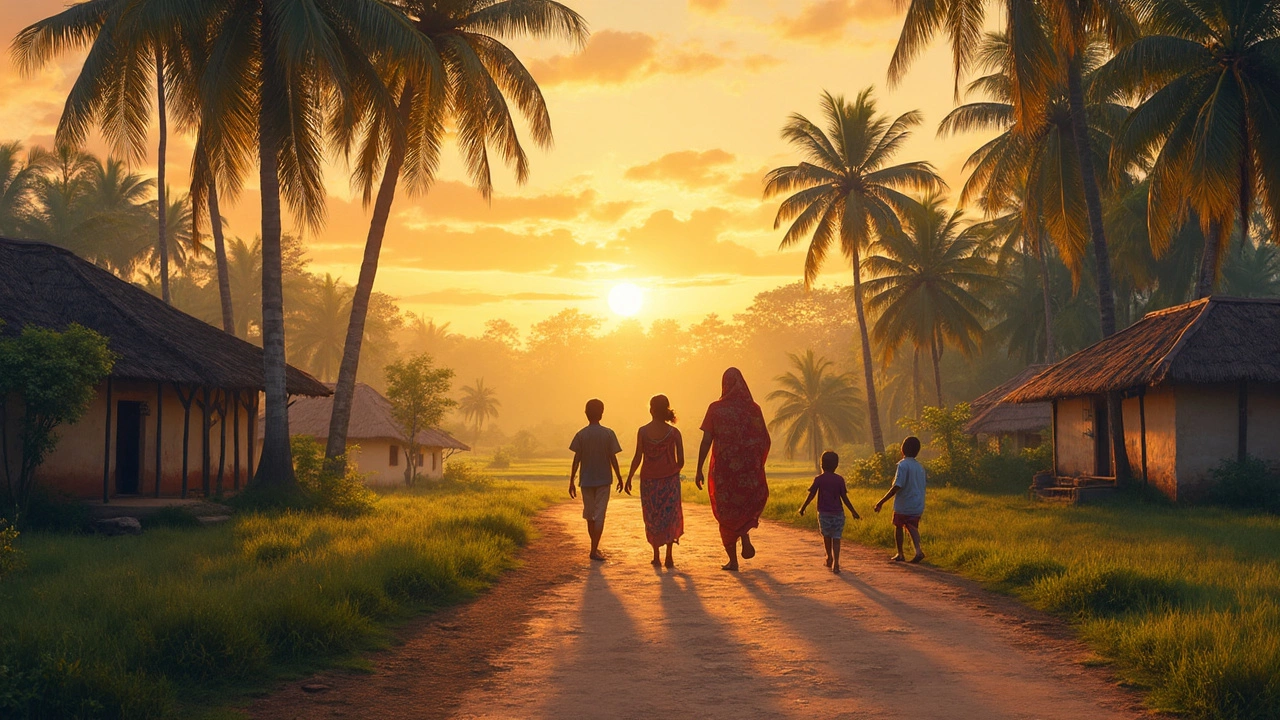
Getting Around: Transport and Local Customs
Moving around South India is a real adventure, but you gotta know how the transport game works. Public transportation here covers every level: super-cheap local buses, wild auto-rickshaw rides, reliable trains, and plenty of taxis if you're feeling fancy. For most tourists, trains and Ubers or Olas (local rideshare apps) are your safest bet, especially if you don’t want to haggle on a dusty street corner or guess what a handwritten bus sign means.
Let's talk trains. The Indian Railways network covers just about every tourist spot, and overnight trains are legit for covering long distances without losing a day. Pro tip: always book your train tickets in advance—especially in busy months. You can easily do this online at irctc.co.in or with the RailConnect app, but you’ll need to register and have patience with the process. Second-class AC (2A or 3A) is what most people choose—way safer and cleaner than the lowest classes. If you’re a woman traveling solo, look for special “Ladies Coach” sections for extra peace of mind.
Auto-rickshaws are everywhere and ideal for short rides in cities. They don’t use meters as much as you’d hope, so you have to state your destination, ask the price, and bargain before hopping in. If you want to skip the chat, use the Ola or Uber app for auto-rickshaws too—then you don’t have to worry about hidden surprises.
Buses connect almost every town, even in the middle of nowhere. State-run buses are super cheap, but often crowded and less comfy. Private bus lines are pricier but offer a smoother ride. Major cities also have metro trains now—Bangalore’s and Chennai’s are fast, cheap, and way less crowded than the roads.
Here’s a quick look at typical transport costs for South India travel:
| Transport Type | Cost Range (per ride) | Comfort Level |
|---|---|---|
| Local Bus | ₹10-₹50 | Basic, crowded |
| Auto Rickshaw (2km) | ₹40-₹100 | Average, depends on driver |
| Uber/Ola (city) | ₹100-₹300 | Comfortable, AC |
| Train (Chennai to Bangalore, 2A) | ₹1000-₹1500 | High, safe for tourists |
Customs-wise, South India is pretty chill but has lots of unspoken rules. In temples, always remove your shoes at the entrance and wear modest clothing (no shorts or tank tops). Public displays of affection aren’t common here—so skip the hugs and kisses in crowds. If you’re invited to someone’s house, it’s polite to bring something small—like sweets for the host (my kid Rylan loves Mysore Pak, for what it’s worth).
English works pretty well in most cities thanks to tourism, but don’t expect everyone to speak it fluently. If you need help, just start with a smile and simple words—folks are patient with travelers trying to get by. And don’t be surprised if someone asks for a selfie with you, especially if you stand out—just roll with it, it’s part of the friendly vibe.
Health, Food, and Staying Comfortable
Thinking about health and food safety is just smart planning, especially when traveling through South India travel hotspots. Most big cities—like Bangalore, Chennai, and Kochi—have reliable hospitals and clinics. Even smaller towns usually offer decent medical care, especially for common stuff like upset stomachs, fevers, or a quick vaccination. For more serious problems, you’ll want insurance that covers private hospitals, since they handle tourists better and English is widely spoken there.
When it comes to food, South India is famous for its bold flavors, lots of rice, and spice-packed dishes. Most travelers get hooked on dosa and filter coffee pretty fast. But if you’re not careful where you eat, you might spend a day (or three) glued to your hotel bathroom. Stick to busy restaurants (crowds mean the food turns over fast), avoid fresh salads from street carts, and watch tap water. Always ask for bottled water—make sure the seal isn’t broken. Ice in drinks is best skipped, especially when you can’t see how it’s made.
On snacks: pack something simple for day trips, like nuts or packaged chips. It helps avoid dodgy treats when you’re hungry and lost in a crowd. Families and people with food allergies will find it easy to get vegetarian, gluten-free, or dairy-free dishes almost everywhere. Just tell the staff what you can’t eat; many folks understand basic English, especially around tourist spots.
- Keep hand sanitizer and wet wipes handy. Restrooms at roadside stops can be hit or miss.
- Use a hat, sunglasses, and sunscreen (at least SPF 30). Sunburn and heat exhaustion can hit hard, especially if you’re out exploring temples or wildlife parks for hours.
- During the hot season (March–June), drink loads of bottled water. When it’s monsoon (June–September), pack an umbrella and waterproof shoes. Streets can flood fast in big cities.
- Mosquito repellent is a must, especially if you’re near backwaters or rural areas. Dengue is rare but pops up sometimes—no harm in being careful.
| Travel Issue | Common Solution in South India |
|---|---|
| Stomach troubles | ORS packs from any pharmacy; drink loads of fluids |
| Sunburn | Coconut oil, sunscreen from local shops |
| Mosquito bites | Odomos cream or citronella sprays, easily available |
The best way to stay comfortable? Dress for the weather—light, loose clothes work for cities and the beach, but bring a shawl or something to cover up in temples or conservative areas. If you’re ever unsure about health or tourist safety, ask your hotel staff—they’ve seen it all and usually know the quickest fix in any situation. I always keep a mini first-aid kit for my son Rylan; even a small cut can be a hassle if you’re far from a pharmacy. Just a little prep makes South India travel so much smoother and safer, whether you’re solo, with kids, or just working your way through every snack stand on the street.
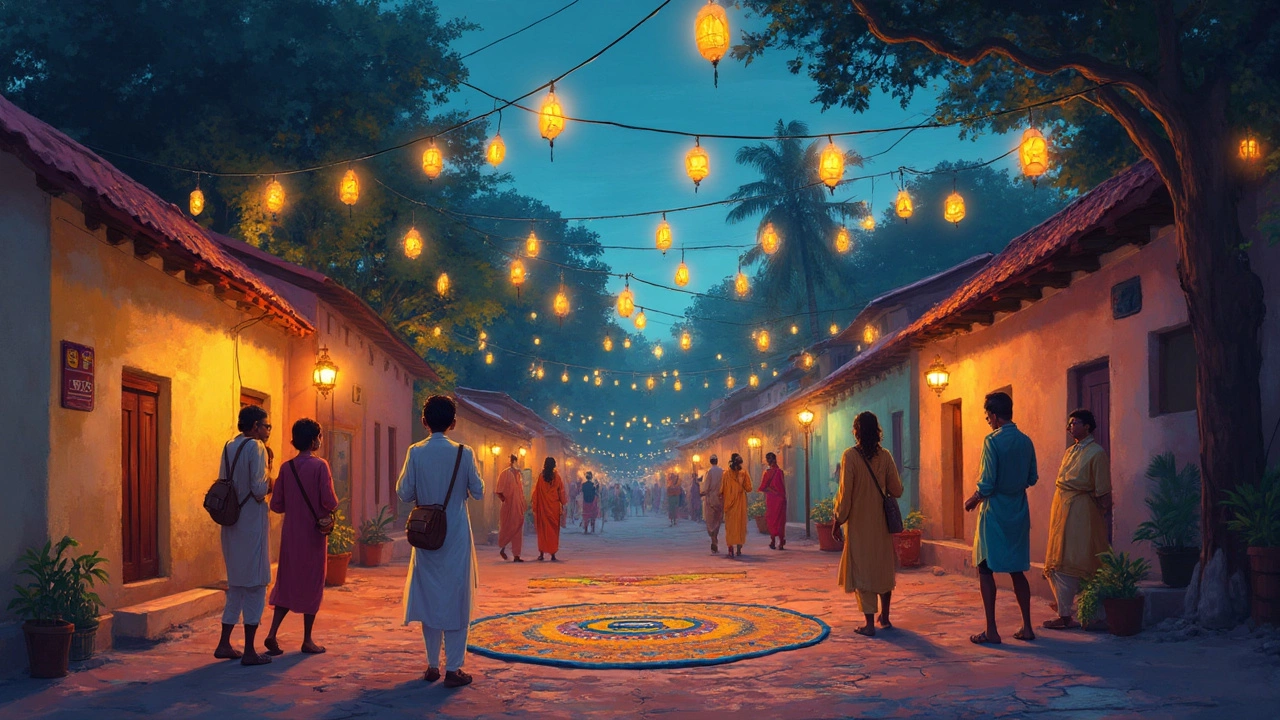
Practical Tips for Different Types of Travelers
South India’s got something for every kind of tourist, but the way you tackle safety might look a little different if you’re solo, with the kids, or rolling in a group. Here's how to make sure your South India travel adventure is memorable for all the right reasons.
- Solo Travelers: Stay in well-reviewed hotels or hostels where security is decent. Women, in particular, tend to feel safer in bigger cities like Bangalore and Kochi—these spots get a lot of backpackers. At night, use rideshare apps instead of hailing cabs on the street, and don’t flash pricey gadgets around. If someone’s giving you that weird vibe or asking too many personal questions, trust your gut and move on.
- Families: Most major cities have family-friendly hotels and a ton of southern hospitality. Popular parks, beaches like Kovalam, and wildlife trips in places like Bandipur or Periyar are generally safe and well-organized. Keep an eye on adventurous kids in busy places; it gets crowded fast, especially at temples or festivals. Always carry some basic meds and hand sanitizer—the street food is delicious, but the hygiene can be hit-or-miss at stalls.
- Older Travelers: Stick to government-regulated tour companies for long trips. Public transportation has improved, but only look for prepaid taxis and check your ride on apps like Ola or Uber. Ask hotels to arrange wheelchair access if needed—big city hotels will usually sort that. Heat can sneak up on you during afternoons, so wear a hat, grab water, and take breaks indoors in the hotter months (March-June).
- Women Travelers: South India’s more laid-back than up north, but dress on the conservative side—long pants and loose tops. It’s not about making a statement; it’s just less hassle. Sit near the front on buses and avoid empty train compartments at night. And one simple trick: carry a scarf or light shawl–it helps with temple visits and sudden stares alike.
- Groups of Friends: Big groups usually attract less unwanted attention, but keep an eye on each other at markets, beaches, or parties. Set a meeting point before splitting up, especially if you plan to check out nightlife in places like Goa or Bangalore. Watch out for duplicate tourist services or sketchy tours blocking your way in busy spots—stick to those with real Google reviews.
If you’re worried about the numbers, here’s what recent stats say about tourist safety in the region:
| State | Reported Tourist Incidents (2023) | Popular Safety Rating (1-5) |
|---|---|---|
| Kerala | 98 | 4.7 |
| Tamil Nadu | 113 | 4.5 |
| Karnataka | 83 | 4.6 |
| Andhra Pradesh | 56 | 4.4 |
And one last pointer: let someone outside your group know your rough itinerary and touch base once a day. It might feel like overkill, but cell service drops in some rural spots and Western Ghats hills. Play it smart, and South India travel really does turn out to be safe, friendly, and a lot of fun.
